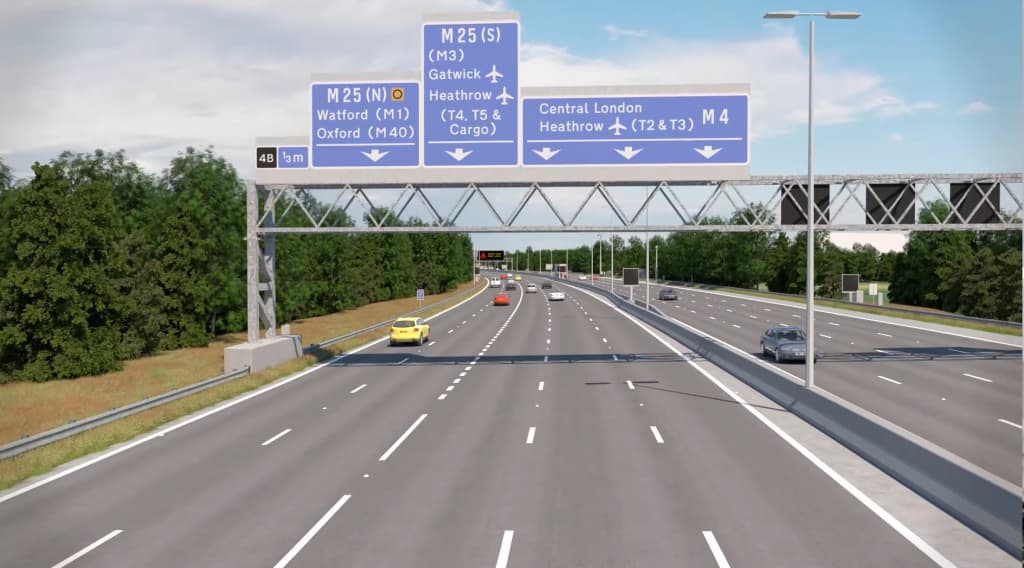The engagement of this project has ended
Get project news
Do you want to receive an email when news items are posted?
News on M4 J3-12 smart motorway
Back to newsOur response to your recent comments
This is the second of our responses to your comments on the Commonplace site. Also, our latest monthly news bulletin for May is out and can be found here.

The issues you have raised recently fall into four main themes:
Timetable of the project
We are constantly reviewing the programme to ensure that our delivery of the project is as efficient and effective as possible, and remains on time and on budget. This may mean that certain works will be brought forward and traffic management is extended ahead of schedule. The aim is to reopen sections of the completed smart motorway as soon as possible. Keep an eye on our websites for updates on the overall programme in due course.
We have begun enabling works at various sections of the motorway route including at the structures and we always endeavour to minimise disruption as much as possible. The key thing is that the roadworks will be set out with three narrow lanes always open at peak times (this means daytime, except for some weekend closures during the project), a 50mph speed limit, and free recovery if you break down in the construction area.
Purpose, aims and safety of smart motorways
The starting point for smart motorways is that many of England’s most important roads are heavily congested and this includes the M4 Junctions 3 to 12, which links London to Windsor, Slough, Maidenhead and Reading – the Thames Valley economic area which hosts major tourist attractions such as Legoland and Windsor Castle. By reducing congestion and increasing capacity smart motorways support economic growth.
The conversion of the hard shoulder is crucial to providing extra capacity on the road along with the supporting technology such as signs and signals, CCTV, emergency areas for breakdowns and Red X signs to close lanes in the event of an incident.
Smart motorways are developed almost wholly within the existing highway boundary and therefore have a lower environmental impact than traditional widening schemes.
Our research shows that the latest generation of smart motorways are performing well in line with expectations. Data released last year for the M25 J5-7 and J23-27 All Lane Running (ALR) schemes show that capacity has been successfully increased and they are meeting or exceeding their safety objectives. Across the two schemes the casualty rate reduced by 27%. The overwhelming majority of drivers are complying with the Red X. These smart motorways have also successfully reduced the stop-start congestion that smart motorways were designed to tackle. We are confident that this will be replicated on the M4 J3-12.
Roadworks issues
Some have asked again why the roadworks are designed in the current format. Safety is the highest priority when planning works. Stopping sight distances, thinking time, reaction time and impact forces all change significantly between 70mph and 50mph. The locations and extent of all speed restrictions are carefully considered during the design and planning of the scheme and implemented for a specific reason.
The length of the roadworks is important for delivering the scheme efficiently and reopening the motorway as soon as possible. Putting in and removing roadworks takes significant time and requires closures of the motorway so moving the layout on a regular basis would be very disruptive. We have passed on comments about the temporary white lines to the traffic management team who will investigate this issue.
The signage is designed and set out in line with national guidelines, but also to ensure that the road is not ‘cluttered’ with signs that might confuse drivers or obscure other signs. We are responding to concerns about signage and review the approach regularly.
Also, a reminder about what to do if you break down in the roadworks. We offer free recovery to a place of safety during roadworks and a handy guide to what to do can be found here, or in your highway code:
https://www.gov.uk/government/organisations/highways-england/about-our-services#free-recovery .
M4 interface with the M25
Several of you have asked about the plans for junction 4b. The eastbound approach to the M25 currently consists of 4 lanes, just one of which leads to the exit to the M25 and is prone to congestion. The completed smart motorway will become a 5-lane road on the eastbound approach to the M25 at junction 4b. Lane 1 will lead to the M25 northbound, lane 2 will lead to the M25 southbound, while lanes 3, 4 and 5 will continue towards London. See the image below for the new layout, which you can also see in the video below.
